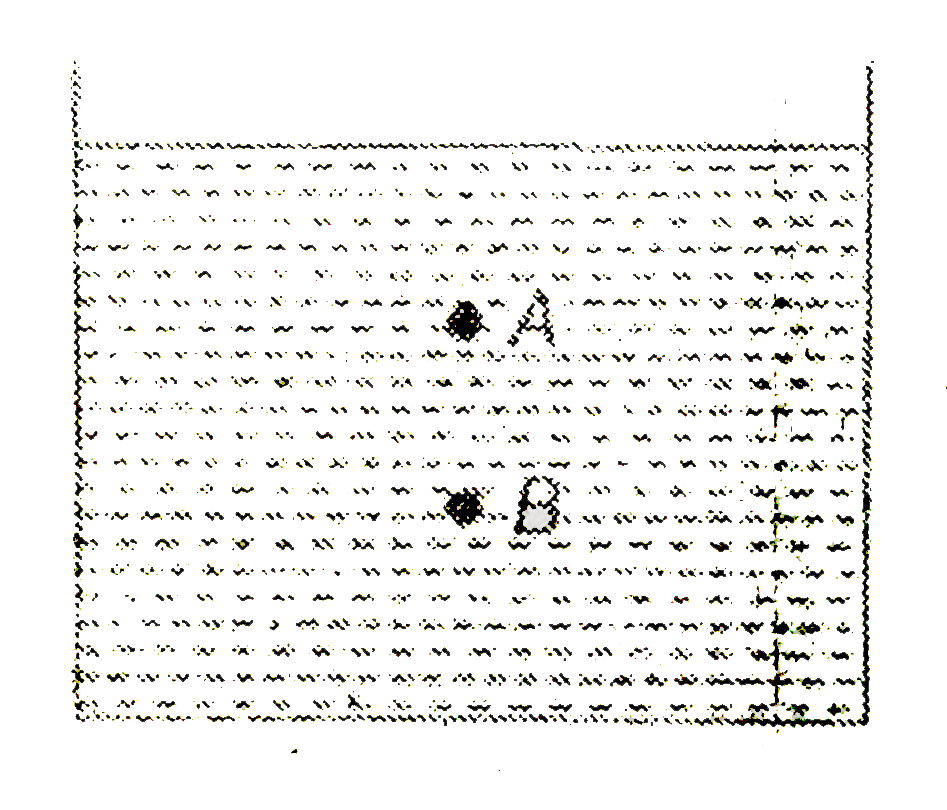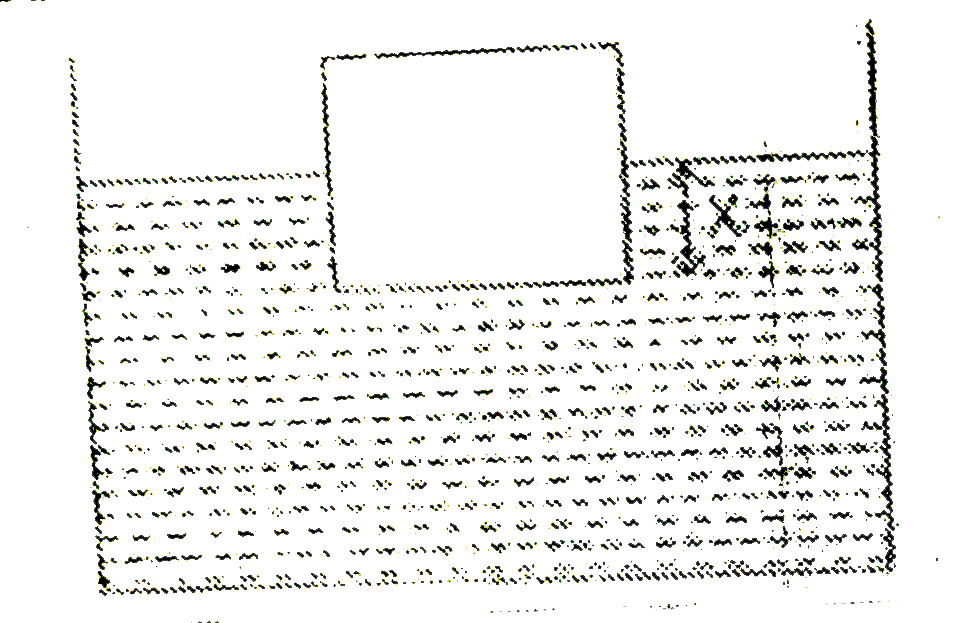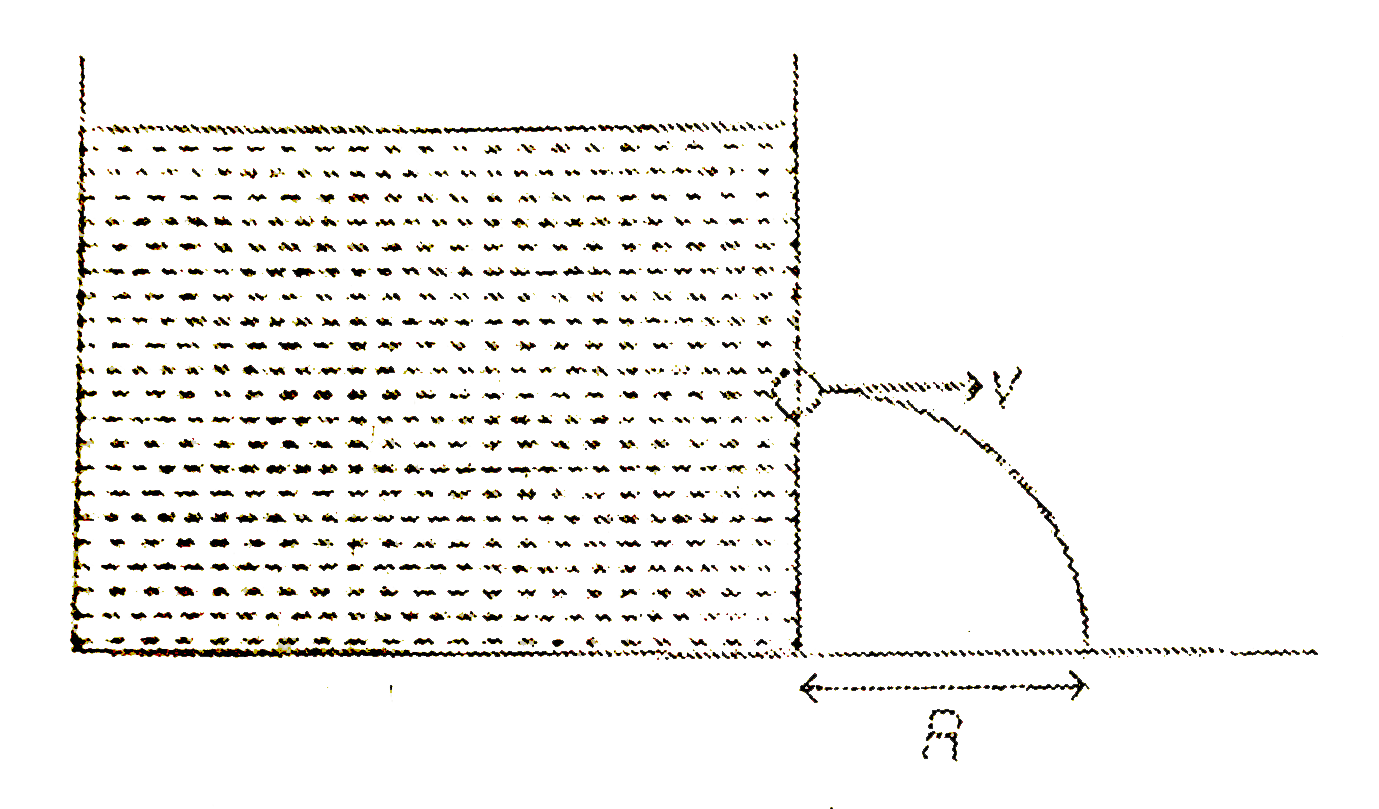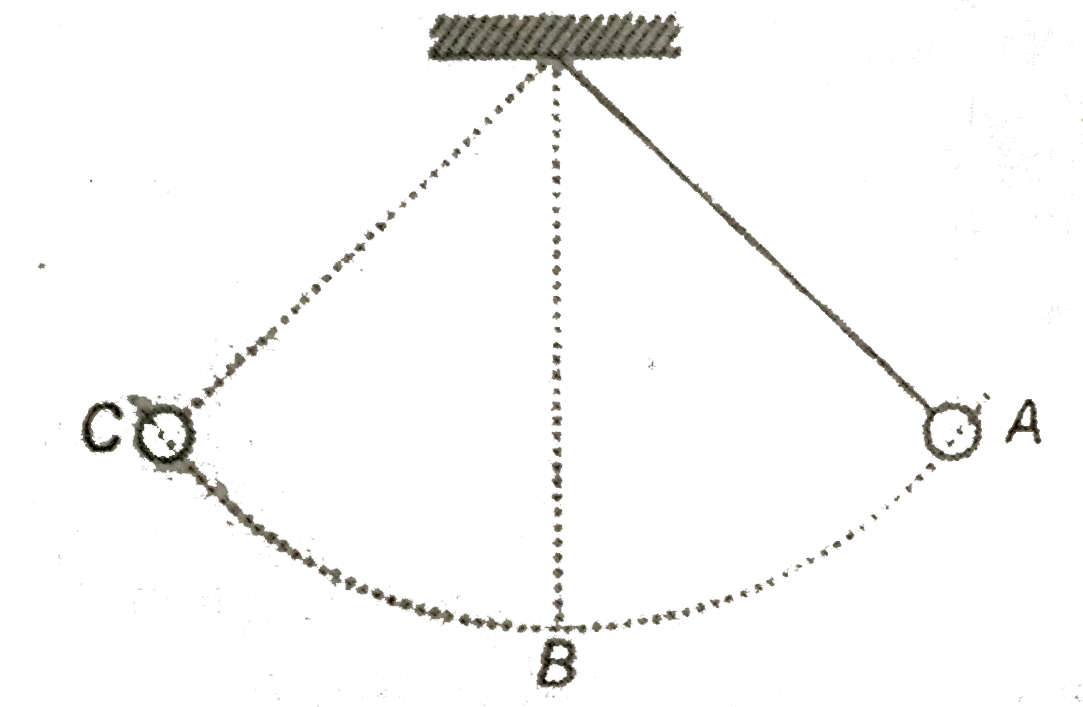There are two point A and B inside a liquid as shown in figure. Now the vessel starts moving upwards with an acceleration a. Match the following.

∣∣
∣
∣
∣
∣
∣
∣∣Table-1Table-2(A)Pressure at B will(P)increase(B)Pressure difference(Q)decreasebetween A and B will(C)Upthrust on an object(R)remain sameinside the verssel will∣∣
∣
∣
∣
∣
∣
∣∣
The correct Answer is:A, B, C
At depth h p p=p0+p(g+a)h⇒Δp=p(g+a)Δh
Upthrust will also increase because upthrust
F=Vi(g+a)ρ
Here, Vi is the immersed volume.
Topper's Solved these Questions
- BOOK - DC PANDEY ENGLISHCHAPTER - FLUID MECHANICSEXERCISE - Medical entranes gallery49videos
FLUID MECHANICS
- BOOK - DC PANDEY ENGLISHCHAPTER - FLUID MECHANICSEXERCISE - B) Medical entrance special format question19videos
FLUID MECHANICS
- BOOK - DC PANDEY ENGLISHCHAPTER - EXPERIMENTSEXERCISE - Subjective15videos
EXPERIMENTS
- BOOK - DC PANDEY ENGLISHCHAPTER - GENERAL PHYSICSEXERCISE - INTEGER_TYPE2videos
GENERAL PHYSICS
Similar Questions
A cube is floating in a liquid as shown in figure. Match the following.

∣∣ ∣ ∣ ∣ ∣ ∣ ∣ ∣ ∣ ∣∣Table-1Table-2(A)If density liquid(P)increasedecreases x will(B)If size of cube is(Q)decreaseincreased x will(C)If the whole system is(R)remain sameaccelerated upwards xwill∣∣ ∣ ∣ ∣ ∣ ∣ ∣ ∣ ∣ ∣∣View SolutionTwo soap bubbles coalesce to form a single large drop. Match the following.
∣∣ ∣ ∣ ∣ ∣ ∣ ∣ ∣ ∣∣Table-1Table-2(A)Surface energy in the(P)increaseprocess will(B)Temperature of the(Q)decreasedrop will(C)Pressure inside the(R)remain samesoap bubble will∣∣ ∣ ∣ ∣ ∣ ∣ ∣ ∣ ∣∣View SolutionA tube is inverted in a mercury vessel as shown in figure. If pressure P is increased, then

∣∣ ∣ ∣ ∣ ∣ ∣∣Table-1Table-2(A)Height h(P)will increase(B)Pressure at O(Q)will decrease(C)Pressure at 1 cm(R)will remain sameabove O∣∣ ∣ ∣ ∣ ∣ ∣∣View SolutionA solid is immersed completely in a liquid. The temperature coefficients of volume expansion of solid and the liquid are γ1 and γ2(<γ1). If temperatures of both are increased, then match the following.
∣∣ ∣ ∣ ∣ ∣ ∣∣Table-1Table-2(A)upthrust on the solid will(P)increase(B)apparent weight of the solid will(Q)decrease(C)fraction of volume immersed in(R)remain samethe liquid if allowed to float will∣∣ ∣ ∣ ∣ ∣ ∣∣View SolutionIn the figure shown, velocity of liquid which comes out is v, time of liquid to fall to ground is t and range on ground is R. If the vessel is taken to a mountain, match the following.

∣∣ ∣ ∣ ∣∣Table-1Table-2(A)V(P)will increase(B)t(Q)will decrease(C)R(R)will remain same∣∣ ∣ ∣ ∣∣View SolutionMatch the following
∣∣ ∣ ∣ ∣ ∣ ∣ ∣ ∣ ∣∣ Table-1 Table-2(A) Steel(P) Young's modulus of elasticity(B) Water(Q) Bulk modulus of elasticity(C) Hydrogen gas filled(R) sheer modulus of in a chamber elasticity∣∣ ∣ ∣ ∣ ∣ ∣ ∣ ∣ ∣∣View SolutionMatch the following
Table - 1Table - 2(A)σ2/ε0(P)C2/J−m(B)ε0(Q)Farad(C)ampere - secondVolt(R)J/m3(D)VE(S)metreView SolutionA pendulum is released from point A as shown in figure. At some instant net force one the bob is making an angle θ with the string. Then Match the following

Table-1Table-2(A)For θ=30∘(P)Particle may be moving along BA(B)For θ=120∘(Q)Particle may be moving along CB(C)For θ=90∘(R)Particle may be at A(D)For θ=0∘(S)Particle is at B(T)NoneView SolutionMatch the following.
∣∣ ∣ ∣ ∣ ∣ ∣ ∣ ∣∣Table-1Table-2(A)Coefficient of viscosity(P)[M2L−1T−2](B)Surface tension(Q)[ML0T−2](C)Modulus of elasticity(R)[ML−1T−2](D)Energy per unit volume(S)Noneof a fiuid∣∣ ∣ ∣ ∣ ∣ ∣ ∣ ∣∣View SolutionMatch the following . When an independent positive charge moves from higher potential to lower potential, then
Table - 1Table - 2(A)its kinetic energy(P)will remain constant(B)its potential energy(Q)will decrease(C)its mechanical energy(R)will increaseView Solution

